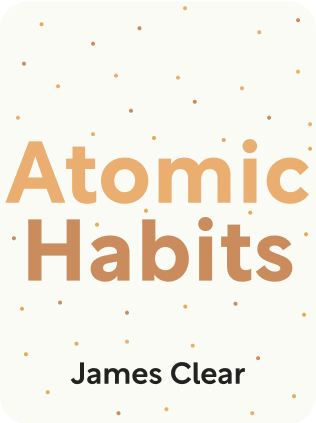

This article is an excerpt from the Shortform book guide to "Atomic Habits" by James Clear. Shortform has the world's best summaries and analyses of books you should be reading.
Like this article? Sign up for a free trial here .
What are behavior cues? What role do environmental behavior cues play in habit formation?
Behavior cues are the stimuli in the external environment that prompt or “cue” a behavior. However, external objects in and of themselves are not cues alone. It is your relationship with the object—the context by which you understand the object—is the trigger.
Keep reading to learn about the role of behavior cues in habit formation.
Habits and Behavior Cues
The way your environment is designed and utilized has a major impact on your behaviors. We are constantly influenced by environmental factors without realizing it. For instance, when we walk into a quiet room, like a church, we automatically whisper. Environment shapes behavior, which makes habits more dependent on context than we know.
In your own life, your habits center around what you see and what appears convenient. To form and maintain good habits, ensure that the right visual cues exist in your environment. You become the architect of your behavior when you design your environment to support obvious cues. One way to organize your environment for success is to learn the context embedded in a cue.
At first, all cues will be specific, but over time, the associated behavior will become linked to the general context of the cue.
- You may have a glass of wine when you go out to dinner with friends. Over time, being with your friends becomes the trigger, not the specific action of eating at a restaurant. Now, anytime you are with friends, you will crave a glass of wine, even if you’re at home.
Different behavior cues develop different contexts for every person.
- You might associate your couch with relaxing and watching movies, whereas someone else sees their couch as a place to read.
- If you want to form the habit of reading more, make the cue obvious by mixing a visual cue with a new context.
- (Shortform example: Before you leave for work, place a book on the couch cushion. When you come home from work, the book will be waiting, and over time, the context of the couch will become associated with reading.)
Your unique relationship with objects is useful in training your brain to view a particular part of your environment in a particular context. To create better habits, ensure that each object or space is only associated with one context. When contexts overlap, it’s easier for the easiest action to win out.
- If you have trouble sleeping but always look at your phone while lying in bed, remove the context of checking social media or texting in bed. Use the bed only when it’s time to sleep.
- By removing all other activities from the bed, you will create a relationship between the bed and sleep. When you lay down each night, your brain will be triggered to respond with sleep.
It’s always easier to form a new habit in a new environment because you’re not fighting old cues. However, if you are not able to change environments, redefine or rearrange yours to create different associations. Create zones for different behaviors, such as only eating at the table or only working at your desk.
The more you can create a stable and predictable environment with clear contextual cues, the more stable and predictable your behaviors will be.
Remove the Cue to Break Habits
The inverse of the first law—make it obvious—is make it invisible. If you want to quit a bad habit, you must remove the corresponding behavior cues.
Despite what you’ve been conditioned to believe, discipline and self-control are not the most important aspects of habit formation. You can break bad habits, but you won’t forget them or their behavior cues. Once a habit is ingrained in the brain, the craving that triggers it will automatically kick in whenever the cue resurfaces.
Willpower is a temporary solution; changing your environment is a long-term solution. When you create a predictable and stable environment, the need for discipline or willpower is reduced.
- For instance, if you stay up too late watching TV in bed, remove the TV from the bedroom.
Reducing exposure to a bad cue is like cutting off the fuel supply to the engine driving the habit. You’ll always remember how to drive, but you won’t be able to start the car.
Bad Habits Can Be Cues
Bad habits often create the cues that trigger behavior. The habit creates a new sensation that triggers the same craving. This trap is known as “cue-induced wanting.”
- When you feel anxious, you smoke a cigarette. Smoking makes you concerned about your health, which makes you anxious, so you reach for another smoke.
- You feel lethargic, so you watch television. Watching television makes you feel unproductive, which makes you more lethargic, so you watch more television.
Create a more positive environment to reduce your vulnerability to this detrimental cycle.

———End of Preview———
Like what you just read? Read the rest of the world's best book summary and analysis of James Clear's "Atomic Habits" at Shortform .
Here's what you'll find in our full Atomic Habits summary :
- The 4 Stages of Habit Formation you can use to transform your life
- How more than half of your daily actions are automatic
- Why some habits stick and why others won't






